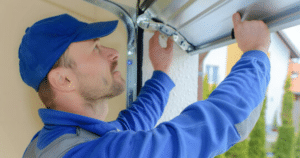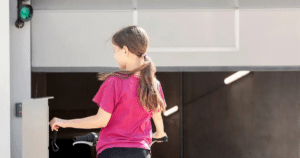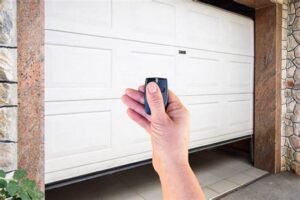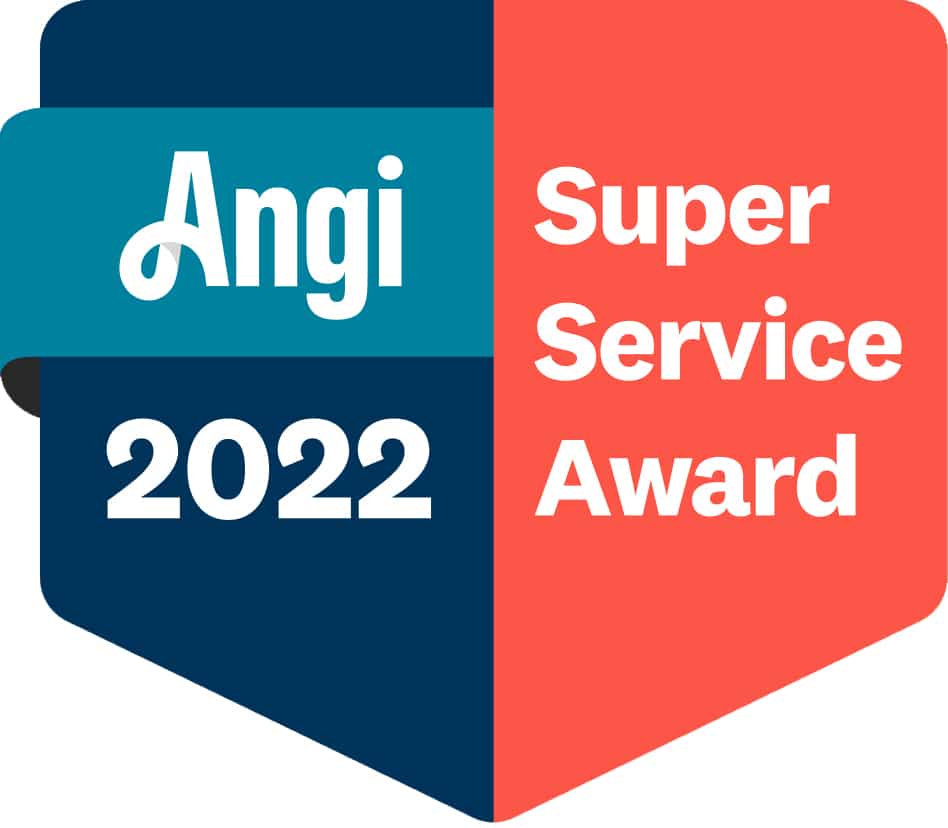Garage doors are important for both convenience and safety, and it’s essential to keep them functioning smoothly. The springs are crucial in counterbalancing the door’s weight and ensuring it opens and closes easily. Adjusting the springs correctly is vital to maintaining proper balance and extending the lifespan of your garage door system. In this guide, we will explain how to adjust both torsion and extension springs to keep your garage door working like new.

Garage door springs are often overlooked, but adjusting them is necessary for routine maintenance. With properly tensioned springs, the door will open and close smoothly, reducing the strain on the opener and other components. However, if the springs are not adjusted correctly, it can cause issues with the door’s operation and pose safety risks. By replacing your garage door springs, you can enjoy a smoother, safer, and longer-lasting system.
This guide will cover the essential steps for adjusting torsion and extension springs, providing you with the knowledge to tackle this critical task. Whether you’re a seasoned DIYer or tackling this project for the first time, the instructions and safety tips provided will ensure you can confidently maintain your garage door’s performance.
Understanding Garage Door Springs
Garage door systems typically utilize one of two types of springs: torsion springs or extension springs. Knowing the difference between these spring types and their functions is crucial for properly adjusting and maintaining your garage door.
Torsion Springs
Torsion springs are an important component in the operation of modern garage doors. They are mounted above the garage door and work by twisting to store and release energy. This allows for a more balanced and controlled operation of the garage door. Torsion springs have become the common choice for modern garage doors due to their reliability and durability. They can withstand the wear and tear of frequent use and can last for many years with proper maintenance. Additionally, torsion springs are designed to operate quietly and smoothly, making for a more pleasant experience when using your garage door.
Extension Springs
Extension springs are a vital component of a garage door system. They are located on either side of the door and work to stretch and provide the necessary lift to open and close the door. While extension springs are still commonly used, they require careful adjustment to ensure even tension on both sides of the door. This is important to prevent any imbalance or potential damage to the door. Professional installation and maintenance services can help ensure extension springs are properly adjusted and functioning safely and efficiently.
The Primary Function of Garage Door Springs
Regardless of the spring type, their primary function is to counterbalance the garage door’s weight, making it easier to open and close. When properly adjusted springs, they work harmoniously with the door’s other components, such as the opener and pulleys, to provide smooth and effortless operation.
By understanding the differences between torsion and extension springs and ensuring they are correctly adjusted, you can help extend the lifespan of your garage door system and enjoy a smooth, safe operation.
Signs that Your Garage Door Springs Need Adjustment
Recognizing the signs of a garage door in need of spring adjustment can save you from future headaches and ensure the smooth, safe operation of your garage door. Here are some key indicators that your garage door springs require attention:
Door Feels Heavier Than Usual
If you notice that your garage door is becoming increasingly difficult to open or close, it could be a sign that the spring tension needs to be adjusted. Properly adjusted springs should counterbalance the weight of the door, making it easy to operate.
Uneven Opening or Closing
When one side of the door opens or closes higher than the other, it’s a clear indication that the spring tension is not balanced. This uneven movement can cause excessive wear on the door’s components and lead to further problems down the line.
Doors Don’t Stay Open or Closed
Garage doors should stay in the position you leave them, whether open or closed, without the need for manual support or the opener. If your door doesn’t maintain its position, it’s time to adjust the spring tension.
Unusual Noises
Listen closely to your garage door as it operates. Creaking, straining, or other unusual sounds can signal that the springs are under or over-tensioned, and an adjustment is necessary.
Safety Precautions Before Adjusting Garage Door Springs
When it comes to adjusting garage door springs, safety should be your top priority. Garage door springs are under immense tension and can pose a severe risk of injury if not handled properly. Follow these essential safety precautions before starting the adjustment process:
Wear Protective Gear
Always wear protective gloves and eyewear when working on your garage door springs. This will help prevent cuts, scratches, or debris from causing harm.
Secure the Door in the Closed Position
Use locking pliers to securely lock the garage door in the closed position before beginning any adjustments. This will prevent the door from dropping unexpectedly and causing injury.
Disconnect the Garage Door Opener
Disconnect the garage door opener by unplugging it or disengaging the release cord. This will ensure the motor doesn’t interfere with your adjustments and create a dangerous situation.
Seek Professional Assistance if Needed
If you feel unsure or uncomfortable while adjusting your garage door, it’s best to stop and seek the help of a professional technician. Team Taylor Door, Kansas City’s leading garage door repair contractor, can use their expertise to ensure your safety and properly adjust your garage door springs.
Tools Needed for Adjusting Garage Door Springs
Properly adjusting your garage door springs requires the right tools to ensure a safe and successful outcome. Here’s a rundown of the essential items you’ll need:
Sturdy Ladder
A stable, tall ladder is necessary to access the springs above the garage door safely. Ensure the ladder is sturdy and tall enough to provide easy access to the spring adjustment mechanism.
Locking Pliers
Locking pliers, also known as vise-grip pliers, are crucial for securely holding the door during adjustment. These will help prevent the door from slamming shut unexpectedly.
Winding Bars
For torsion springs, you’ll need a set of winding bars specifically designed for garage door springs. These specialized tools fit into the winding cones and allow you to add or release tension safely.
Wrenches or Sockets
Depending on the type of springs your garage door has, you may need a wrench or socket to adjust the tension. This could include adjusting the S-hooks or cable clips on extension springs.
Ensuring all your tools are in good condition and suitable for the task is essential. Using the wrong tools or worn-out equipment can lead to dangerous situations, so take the time to gather the proper gear before attempting any garage door spring adjustments.
Step-by-Step Guide on Adjusting Garage Door Springs
Properly adjusting your garage door springs is crucial in maintaining smooth and safe operation. Follow these detailed instructions to ensure your garage door is perfectly balanced:
Prepare Your Work Area
If you plan to adjust the springs on your garage door, you must start by securing the door fully closed. This will ensure the springs are most relaxed, making the adjustment process more accessible and safer. You’ll need to disengage the garage door opener to prevent interference during the adjustment process.
Once you’ve done that, ensure you have a sturdy ladder or step stool to access the springs safely. It’s important to take all necessary precautions when working with garage door springs, as they are under high tension and can be dangerous if mishandled.
Locate the Spring Adjustment Mechanism
Garage door systems typically use either torsion springs or extension springs to help lift and lower the door. Torsion springs are mounted horizontally above the door, while extension springs are vertically alongside the door tracks. It’s important to identify which type of springs your garage door uses, as the adjustment process will vary depending on the type.
Torsion springs require a unique tool to adjust the tension, while extension springs can be adjusted by hand. If you need to figure out what type of springs your door has, it’s best to consult a professional garage door technician for assistance.
Adjusting Torsion Springs
If your garage door makes loud noises or has difficulty opening or closing, it may be time to adjust the torsion springs. You’ll need a set of winding bars to insert into the winding cone holes. Be cautious and adjust small, quarter-turn increments to avoid over-tensioning the springs. This can be dangerous and cause severe injury or damage to your door. You can make these adjustments safely and keep your garage door functioning smoothly with proper care.
Adjusting Extension Springs
Extension springs are a fundamental component of many mechanical devices, and their adjustment process is crucial to ensure optimal performance. To adjust the tension of extension springs, you can move the hook to a different hole in the pulley system or adjust the cable’s length.
It is essential to adjust both springs evenly to maintain proper balance, which is critical for the safety and longevity of the device. Extension springs can provide reliable and consistent performance with appropriate adjustment, making them an essential part of many machines and devices.
Testing the Adjustment
When making adjustments to a door, it’s essential to be precise and thorough. Once the adjustments have been made, it’s crucial to carefully remove any locking pliers or other supports used during the process. After that, it’s time to test the door’s balance manually.
As you observe the door opening and closing, please pay close attention to any areas where it seems to stick or bind. These areas may require further adjustments to achieve a smooth, effortless operation. You can ensure that your door operates perfectly with patience and attention to detail.
Common Mistakes to Avoid When Adjusting Garage Door Springs
Adjusting garage door springs requires care and attention to detail. Avoid these common pitfalls to ensure a safe and effective adjustment:
Over-Tensioning the Springs
One of the most frequent mistakes is over-tensioning the garage door springs. This can lead to rapid wear and tear on the springs and the potential for the door to slam shut unexpectedly, posing a severe safety hazard.
Under-Tensioning the Springs
On the other hand, under-tensioning the springs can cause the door to become too heavy to lift, leading to strained openers and an increased risk of injury.
Using Improper Tools
Attempting to adjust the springs with tools that don’t properly fit the winding cones can cause the tools to slip, which can be extremely dangerous. Always use the appropriate winding bars designed for your specific garage door springs.
Failing to Secure the Door
Only attempt to adjust the springs after securing the door in the closed position. If the door is not properly supported, it could come crashing down, posing a severe safety hazard.
By avoiding these common mistakes and following the step-by-step instructions, you can safely and effectively adjust your garage door springs to ensure smooth, effortless operation.
Tips for Maintaining Properly Adjusted Garage Door Springs
Properly adjusting your garage door springs is crucial, but maintaining them regularly is equally important to ensure long-lasting performance. Follow these tips to keep your garage door springs in top shape:
Conduct Routine Inspections
Make it a habit to inspect your garage door springs every six months. Disconnect the opener and manually lift the door halfway—if the springs are properly balanced, it should stay in place. Also, visually inspect the springs for wear, rust, or damage.
Lubricate the Springs Annually
Applying a light lubricant to the springs once a year can help reduce friction and wear, prolonging their lifespan. Use a silicone-based lubricant or spray specifically designed for garage door components.
Address Issues Promptly
If you notice any changes in the door’s operation, such as increased difficulty opening or closing, uneven movement, or unusual noises, don’t ignore them. These could be signs that the springs need further adjustment or replacement. Addressing problems early can prevent more extensive and costly repairs down the line.
Consider Professional Maintenance
For peace of mind and to ensure your garage door operates at its best, consider scheduling annual maintenance with a professional technician. They can thoroughly inspect your system, make any necessary adjustments, and provide expert recommendations for maintaining its optimal performance.
When Should You Call a Professional for a Garage Door Spring Adjustment?
If you’re experiencing problems with your garage door, you may be tempted to tackle the issue yourself. While DIY adjustments can be done in some cases, there are times when calling a professional is the best course of action.
Adjusting the springs yourself could be dangerous if visibly damaged or broken. Similarly, if you’re uncomfortable with the adjustment process or don’t have the necessary tools or experience, it’s best to leave it to the professionals.
One important thing to remember is that if your garage door has a single torsion spring, it’s under more tension than a door with multiple springs. This means that attempting to work on it yourself could be extremely dangerous. In this case, it’s highly recommended that you call a professional.
Professional garage door technicians have the tools, knowledge, and experience to adjust or replace your door springs safely. They can also diagnose other issues that may be causing problems with your door and recommend the best course of action. So, if you’re experiencing issues with your garage door, don’t hesitate to call the professionals. It could save you time and money and even prevent potential injuries.
Conclusion
Adjusting your garage door springs can significantly improve its operation and safety. While it requires careful attention to safety and detail, maintaining properly adjusted springs is within the reach of most homeowners. However, it’s always best to call in the professionals when in doubt.
At Team Taylor Door, Kansas City’s leading garage door repair contractor, we understand the intricacies of garage door maintenance. If you’re facing challenges with your garage door springs or prefer the assurance of professional service, we’re here to help. Our team of experts is committed to ensuring your garage door operates smoothly and safely, providing peace of mind and convenience for your daily life.
Contact us today for reliable garage door repair in Kansas City and let us take care of your garage door needs!
FAQs
How often should garage door springs be adjusted?
Properly maintained garage door springs typically don’t require regular adjustments. However, inspecting the springs annually for any signs of wear, imbalance, or issues that may necessitate an adjustment is generally recommended.
Can I Adjust the Garage Door Springs on My Own?
You can certainly adjust your garage door springs with the right tools and safety precautions. However, if you need clarification or feel uncomfortable with the process, it’s best to seek professional help from a qualified garage door technician.
How Do I Know If My Garage Door Springs Are Torsion or Extension?
The type of springs your garage door uses is essential to the adjustment process. Torsion springs are mounted above the door, while extension springs run alongside the door tracks.
Why Is My Garage Door Noisy Even After Adjusting the Springs?
Noise can persist even after adjusting the springs, as other factors, such as loose hardware, lack of lubrication, or other components needing adjustment or replacement, may cause them. If the noise continues, further troubleshooting may be required.
Is It Safe to Adjust Garage Door Springs Myself?
While it is possible to adjust garage door springs yourself, strict adherence to safety precautions is required. The risk of injury is significant, so when in doubt, it’s always best to err on the side of caution and let a professional handle the adjustment.
Team Taylor Door stands ready to assist those facing challenges with their garage door springs or for anyone preferring the assurance of professional service. Our commitment to excellence ensures your garage door operates smoothly and safely, granting you peace of mind and the convenience you deserve daily.




















